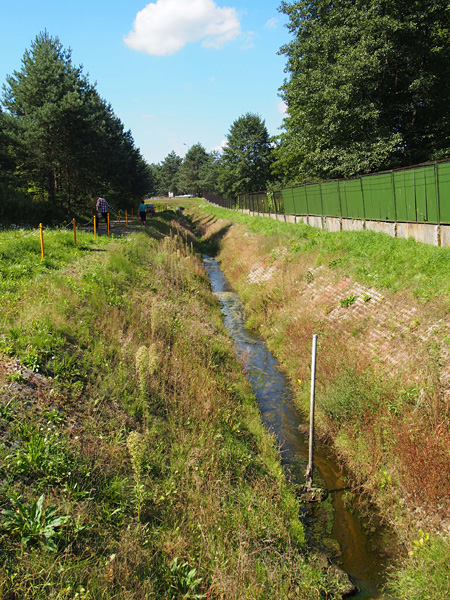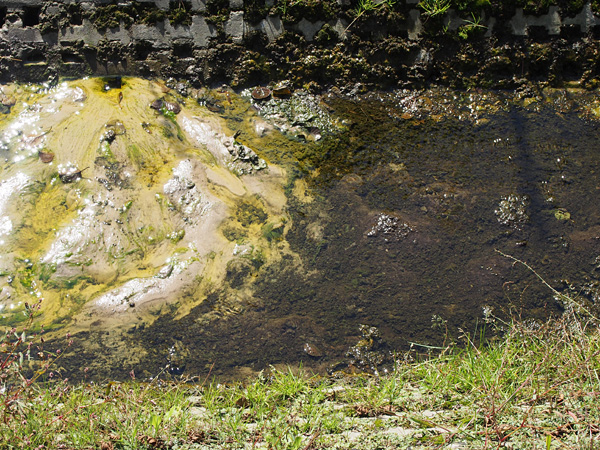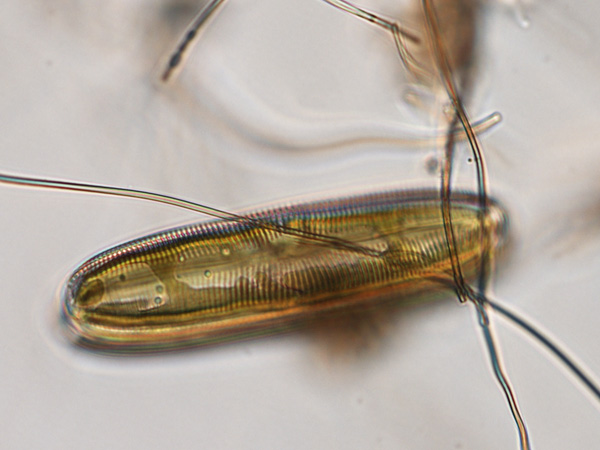Microscopic algae with high potential – diatoms from an environment extremely contaminated with chromium(VI)
Some organisms are extremely resistant to various types of harmful substances. What is more, they are able to neutralize these substances to a significant degree by capturing, breaking down or transforming them into non-toxic forms. Bioremediation – an intensively developed technology for removing contaminants from the environment (mainly water and soils) – is based on these organisms.
Organisms with characteristics desirable in the bioremediation process are found in various taxonomic groups, including higher plants, fungi, bacteria and algae. The list of the latter may soon be enriched with diatoms (Bacillariophyceae) described in one of the last issues of Chemosphere. The authors of the article – phycologists from our Institute (Konrad Wołowski and Joanna Lenarczyk) and scientists from the University of Agriculture in Kraków – conducted research on a ditch that has been collecting infiltrates from a nearby old landfill for 30 years. Despite the extremely high concentration of chromium(VI) in the water (up to 2,000 times higher than the Polish standard allows!), they detected as many as 44 taxa of diatoms in the samples collected, most of which were able to survive in the highly contaminated zone. Three taxa – Gomphonema acuminatum, Melosira varians and Nitzschia frustulum var. frustulum – turned out to be exceptionally resistant to chromium(VI) contamination and were selected for further research. Scientists plan to test their bioremediation potential in laboratory conditions.
More in the original article:
Wołowski K., Lenarczyk J., Augustynowicz J., Sitek E. 2023. Exploring a unique water ecosystem under long-term exposure to hexavalent chromium – An in situ study of natural diatom (Bacillariophyceae) communities. Chemosphere 340: 139941. DOI
The above article is the third in a series about a unique phytobial consortium originating from the ditch contaminated with chromium(VI) compounds. Below are the previous two articles:
Augustynowicz J., Sitek E., Latowski D., Wołowski K., Kowalczyk A., Przejczowski R. 2021. Unique biocenosis as a foundation to develop a phytobial consortium for effective bioremediation of Cr(VI)-polluted waters and sediments. Environmental Pollution 273: 116506. DOI
Ociński D., Augustynowicz J., Wołowski K., Mazur P., Sitek E., Raczyk J. 2021. Natural community of macroalgae from chromium-contaminated site for effective remediation of Cr(VI)-containing leachates. Science of The Total Environment 786: 147501. DOI

Ditch contaminated with chromium(VI) compounds.
Photo: Ewa Sitek

Algae overgrowing the bottom of the studied ditch.
Photo: Ewa Sitek

Joanna Augustynowicz and Ewa Sitek describing the collected samples.
Photo: Konrad Wołowski

Epiphytic diatoms from the study ditch (genus Gomphonema) visible by light microscopy.
Photo: Konrad Wołowski

Brown filamentous colonies of Melosira varians visible by light microscopy.
Photo: Konrad Wołowski

A single diatom cell from the study ditch (genus Pinnularia) visible by light microscopy.
Photo: Konrad Wołowski






